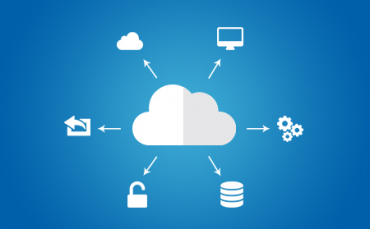CND: Certified Network Defender
Short Description
Full Description
The Certified Network Defender (CND) course is a vendor-neutral, hands-on, instructor-led comprehensive network security certification training program that prepares Network Administrators on network security technologies and operations to attain Defence-in-Depth network security skills. The course contains hands-on labs, based on major network security tools and techniques which will provide Network Administrators real world expertise on current network security technologies and operations.
Certified Network Defender has been designed by industry experts to help IT Professionals play an active role in the Protection of digital business assets and Detection and Response to Cyber Threats, while leveraging Threat Intelligence to Predict them before they happen. CND is a network security course designed to help organizations create and deploy the most comprehensive network defense system.
-
Module 01: Network Attacks and Defense Strategies
- Lesson 01: Explain essential terminologies related to network security attacks
- Lesson 02: Describe the various examples of network-level attack techniques
- Lesson 03: Describe the various examples of application-level attack techniques
- Lesson 04: Describe the various examples of social engineering attack techniques
- Lesson 05: Describe the various examples of email attack techniques
- Lesson 06: Describe the various examples of mobile device-specific attack techniques
- Lesson 07: Describe the various examples of cloud-specific attack techniques
- Lesson 08: Describe the various examples of wireless network-specific attack techniques
- Lesson 09: Describe Attacker’s Hacking Methodologies and Frameworks
- Lesson 10: Understand fundamental goal, benefits, and challenges in network defense
- Lesson 11: Explain Continual/Adaptive security strategy
- Lesson 12: Explain defense-in-depth security strategy
-
Module 02: Administrative Network Security
- Lesson 01: Learn to obtain compliance with regulatory framework and standards
- Lesson 02: Discuss various Regulatory Frameworks, Laws, and Acts
- Lesson 03: Learn to design and develop security policies
- Lesson 04: Learn to conduct different type security and awareness training
- Lesson 05: Learn to implement other administrative security measures
-
Module 03: Technical Network Security
- Lesson 01: Discuss access control principles, terminologies, and models
- Lesson 02: Redefine the Access Control in Today's Distributed and Mobile Computing World
- Lesson 03: Discuss Identity and Access Management (IAM)
- Lesson 04: Discuss Cryptographic security techniques
- Lesson 05: Discuss various cryptographic algorithms
- Lesson 06: Discuss security benefits of network segmentation techniques
- Lesson 07: Discuss various essential network security solutions
- Lesson 08: Discuss various essential network security protocols
-
Module 04: Network Perimeter Security
- Lesson 01: Understand firewall security concerns, capabilities, and limitations
- Lesson 02: Understand different types of firewall technologies and their usage
- Lesson 03: Understand firewall topologies and their usage
- Lesson 04: Distinguish between hardware, software, host, network, internal, and external firewalls
- Lesson 05: Select firewalls based on its deep traffic inspection capability
- Lesson 06: Discuss firewall implementation and deployment process
- Lesson 07: Discuss recommendations and best practices for secure firewall Implementation and deployment
- Lesson 08: Discuss firewall administration concepts
- Lesson 09: Understand role, capabilities, limitations, and concerns in IDS deployment
- Lesson 10: Discuss IDS classification
- Lesson 11: Discuss various components of ID
- Lesson 12: Discuss effective deployment of network and host-based IDS
- Lesson 13: Learn to how to deal with false positive and false negative IDS/IPS alerts
- Lesson 14: Discuss the considerations for selection of an appropriate IDS/IPS solutions
- Lesson 15: Discuss various NIDS and HIDS Solutions with their intrusion detection capabilities Snort
- Lesson 16: Discuss router and switch security measures, recommendations, and best practices
- Lesson 17: Leverage Zero Trust Model Security using Software-Defined Perimeter (SDP)
-
Module 05: Endpoint Security-Windows Systems
- Lesson 01: Understand Window OS and Security Concerns
- Lesson 02: Discuss Windows Security Components
- Lesson 03: Discuss Various Windows Security Features
- Lesson 04: Discuss Windows Security Baseline Configurations
- Lesson 05: Discuss Windows User Account and Password Management
- Lesson 06: Discuss Windows Patch Management
- Lesson 07: Discuss User Access Management
- Lesson 08: Windows OS Security Hardening Techniques
- Lesson 09: Discuss Windows Active Directory Security Best Practices
- Lesson 10: Discuss Windows Network Services and Protocol Security
-
Module 06: Endpoint Security-Linux Systems
-
Module 07: Endpoint Security-Mobile Devices
- Lesson 01: Common Mobile Usage Policies in Enterprises
- Lesson 02: Discuss Security Risk and Guidelines associated with Enterprises mobile usage policies
- Lesson 03: Discuss and implement various enterprise-level mobile security management solutions
- Lesson 04: Discuss and implement general security guidelines and best practices on Mobile Platforms
- Lesson 05: Discuss Security guidelines and tools for Android devices
- Lesson 06: Discuss Security guidelines and tools for iOS devices
-
Module 08: Endpoint Security-IoT Devices
- Lesson 01: Understanding IoT Devices, their need and Application Areas
- Lesson 02: Understanding IoT Ecosystem and Communication models
- Lesson 03: Understand Security Challenges and risks associated with IoT-enabled environments
- Lesson 04: Discuss the security in IoT-enabled environments
- Lesson 05: Discuss Security Measures for IoT enabled IT Environments
- Lesson 06: Discuss IoT Security Tools and Best Practices
- Lesson 07: Discuss and refer various standards, Initiatives and Efforts for IoT Security
-
Module 09: Administrative Application Security
-
Module 10: Data Security
- Lesson 01: Understand data security and its importance
- Lesson 02: Discuss the implementation of dataa access controls
- Lesson 03: Discuss the implementation of Encryption of Data at rest
- Lesson 04: Discuss the implementation of Encryption of "Data at transit"
- Lesson 05: Discuss Data Masking Concepts
- Lesson 06: Discuss data backup and retention
- Lesson 07: Discuss Data Destruction Concepts
- Lesson 08: Data Loss Prevention Concepts
-
Module 11: Enterprise Virtual Network Security
- Lesson 01: Discuss the evolution of network and security management concept in modern Virtualized IT Environments
- Lesson 02: Understand Virtualization Essential Concepts
- Lesson 03: Discuss Network Virtualization (NV) Security
- Lesson 04: Discuss SDN Security
- Lesson 05: Discuss Network Function Virtualization (NFV) Security
- Lesson 06: Discuss OS Virtualization Security
- Lesson 07: Discuss Security Guidelines, Recommendations and Best Practices for Containers
- Lesson 08: Discuss Security Guidelines, Recommendations and Best Practices for Dockers
- Lesson 09: Discuss Security Guidelines, Recommendations and Best Practices for Kubernetes
-
Module 12: Enterprise Cloud Network Security
- Lesson 01: Understand Cloud Computing Fundamentals
- Lesson 02: Understanding the Insights of Cloud Security
- Lesson 03: Evaluate CSP for Security before Consuming Cloud Service
- Lesson 04: Discuss security in Amazon Cloud (AWS)
- Lesson 05: Discuss security in Microsoft Azure Cloud
- Lesson 06: Discuss security in Google Cloud Platform (GCP)
- Lesson 07: Discuss general security best practices and tools for cloud security
-
Module 13: Enterprise Wireless Network Security
-
Module 14: Network Traffic Monitoring and Analysis
- Lesson 01: Understand the need and advantages of network traffic monitoring
- Lesson 02: Setting up the environment for network monitoring
- Lesson 03: Determine baseline traffic signatures for normal and suspicious network traffic
- Lesson 04: Perform network monitoring and analysis for suspicious traffic using Wireshark
- Lesson 05: Discuss network performance and bandwidth monitoring tools and techniques
-
Module 15: Network Logs Monitoring and Analysis
- Lesson 01: Understand logging concepts
- Lesson 02: Discuss log monitoring and analysis on Windows systems
- Lesson 03: Discuss log monitoring and analysis on Linux
- Lesson 04: Discuss log monitoring and analysis on Mac
- Lesson 05: Discuss log monitoring and analysis in Firewall
- Lesson 06: Discuss log monitoring and analysis on Routers
- Lesson 07: Discuss log monitoring and analysis on Web Servers
- Lesson 08: Discuss centralized log monitoring and analysis
-
Module 16: Incident Response and Forensic Investigation
-
Module 17: Business Continuity and Disaster Recovery
-
Module 18: Risk Anticipation with Risk Management
- Lesson 01: Understand risk management concepts
- Lesson 02: Learn to manage risk though risk management program
- Lesson 03: Learn different Risk Management Frameworks (RMF)
- Lesson 04: Learn to manage vulnerabilities through vulnerability management program
- Lesson 05: Learn vulnerability Assessment and Scanning
-
Module 19: Threat Assessment with Attack Surface Analysis
- Lesson 01: Understand the attack surface concepts
- Lesson 02: Learn to understand and visualize your attack surface
- Lesson 03: Learn to identify indicators of Exposures (IoE)
- Lesson 04: Learn to perform attack simulation
- Lesson 05: Learn to reduce the attack surface
- Lesson 06: Discuss attack surface analysis specific to Cloud and IoT
-
Module 20: Threat Prediction with Cyber Threat Intelligence
- Lesson 01: Understand role of cyber threat intelligence in network defense
- Lesson 02: Understand the types of threat Intelligence
- Lesson 03: Understand the Indicators of Threat Intelligence: Indicators of Compromise (IoCs) and Indicators of Attack (IoA)
- Lesson 04: Understand the layers of Threat Intelligence
- Lesson 05: Learn to leverage/consume threat intelligence for proactive defense











